Looking to the future, learning from the past.
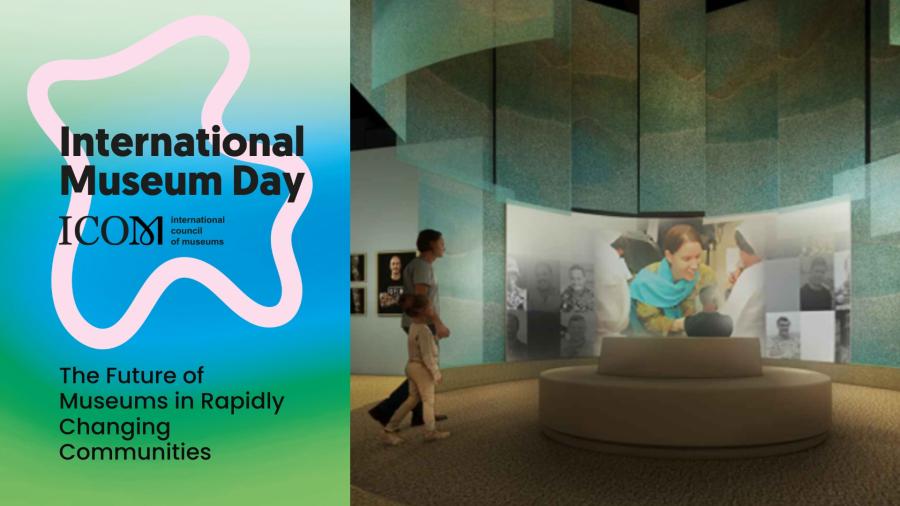
Concept for Afghanistan reflections space © Australian War Memorial
ICOM International Museum Day 2025
The Future of Museums in Rapidly Changing Communities
In late 2019, the gallery development team formed and embarked on the journey of developing 7,000 square metres of new galleries for the Australian War Memorial, tasked with telling the stories of modern conflicts to deepen public understanding of the Australian experience of war. Today, I take stock and reflect on the vision we created in those early days, in particular thanking our communities for their collaboration with the gallery development. The legacy of these galleries belongs to them.
Museums are essential connectors and stewards of cultural identity.
We began envisioning the new galleries in early 2020; looking at other world class museums, investigating the collection, exploring new opportunities and audience needs, and thinking about what new things we could do. What came out of this was the realisation that we didn’t have all of the answers (and that was OK!). To get it right, we needed to look outward, reach into our communities, seek feedback and test our assumptions.
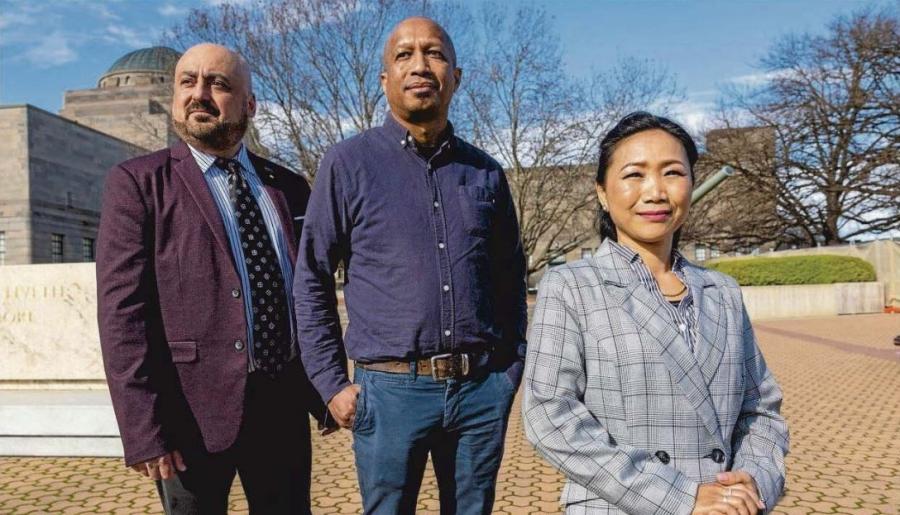
The Memorial's advisory groups have been an integral part of the development project. Bashar Hanna, Gil Santos and Lisa Nagatsuka are members of the Memorial's CALD Advisory Group.
Museums are cultural hubs that promote inclusion, resilience, and heritage preservation.
It was very clear from the outset that – given the absence of written official histories for recent conflicts in Afghanistan, Iraq, North Iraq and Syria, along with gaps in the National Collection – stakeholder engagement would be absolutely critical to content development. Veterans were consulted extensively to ensure that we represented their stories accurately, through their lived experience of service. We also learnt that including the experiences of diaspora communities – those displaced from their homelands and culture by war and conflict – was a new opportunity and was essential to meeting our audiences’ expectations. And so our community engagement strategy began with establishing the five advisory groups we have today. In the beginning there was some trepidation, and perhaps a little resistance, when considering how we would begin community engagement. We would have to build community connections, share incomplete ideas, and be open genuinely responsive to feedback, both good and bad.
Soon enough we hit our stride, arranging the narrative with veterans’ advice. We embraced difficult discussions about the physical, psychological and social impacts of war with Australian Defence Force personnel and their families, and for the first time invited diaspora communities to share their stories alongside veterans. During the last four years we have developed our networks, reached further into communities, and taken a collaborative approach to truth-telling, showing the complexity of war from multiple perspectives, presenting the facts alongside authentic emotional storytelling.
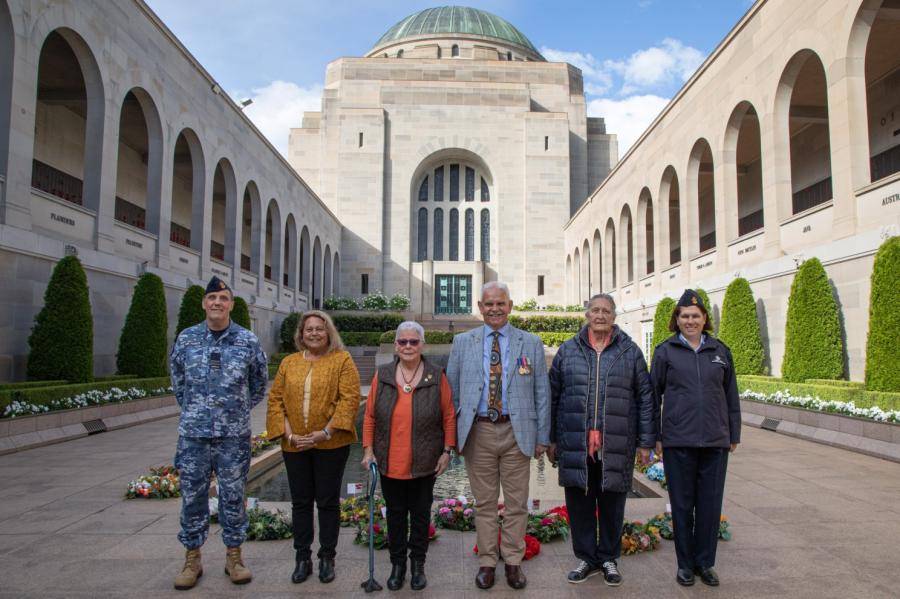
Members of the Aboriginal and Torres Strait Islander Advisory Group attending a Last Post Ceremony.
It has been a tough journey. Acknowledging vicarious trauma and managing emotional and psychological distress in a high-pressure project environment have combined with the Covid-19 pandemic in 2019, the release of the IGADF report in 2020, and the withdrawal of troops and evacuation of Afghanistan in 2021. There were difficult years as we navigated a rapidly changing environment and the community sentiments those events brought to the fore. While in lockdown, we witnessed the Taliban take-over of Kabul through the media’s lens, only able to huddle together as an online team, standing in solidarity with the people of Afghanistan with shared uncertainty for the future, watching in horror from afar.
Museums safeguard intangible heritage.
This sense of powerlessness, however, contributed to our grit and motivation to forge ahead, take the time to be present and listen, to record and preserve the intangible heritage, becoming custodians and providing the space where important stories could be shared. We used our design development stages to check and measure our progress with advisory groups and others, who consistently reminded us not to sanitise history, to present the facts, and to provide choices for visitors to opt in or out of more challenging content. Our audiences agreed unanimously it was time to go there, while also acknowledging the challenges of public perception.
The generosity, stewardship and candour of our advisory groups and extended communities have ensured careful attention to the design and visitor experiences. There are spaces for introspection and reflection, interaction and debate, and safe spaces to confront difficult content.
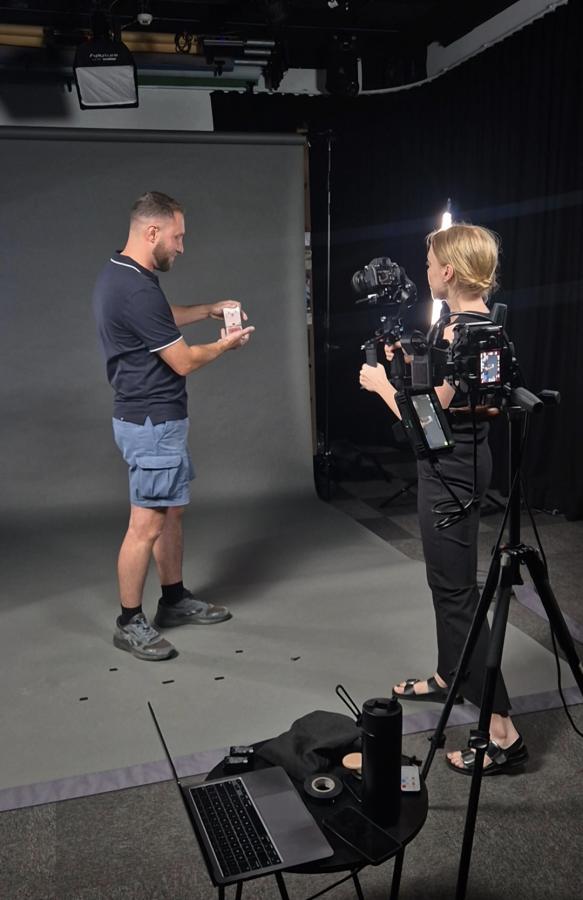
Filming Karam Elis, whose family fled from Iraq when he was a young boy. Elis returned to Iraq in 2016 serving with the ADF. © Australian War Memorial
Museums are cultural hubs that promote inclusion, resilience, and heritage preservation.
I’m immensely proud that this small team is delivering what we promised five years ago. While we still have another few months of installation ahead of us, the realisation of our vision will not be marked by private functions, VIP speeches or media releases and press enquiries, but will be the day the door opens to the public. This will be the moment where the story owners and their communities see themselves represented, in their own voices, sharing themselves with the world, some celebrating and some commiserating. Through this myriad of perspectives we will have cast new light on the complex experiences of war. I very much look forward to the voice of veterans, their families and diaspora communities being presented to the public in 2026. The legacy of the new galleries is, ultimately, the result of community contribution, differing viewpoints on the lessons of resilience and the human condition. Through this, we can look to the future by learning from the past.
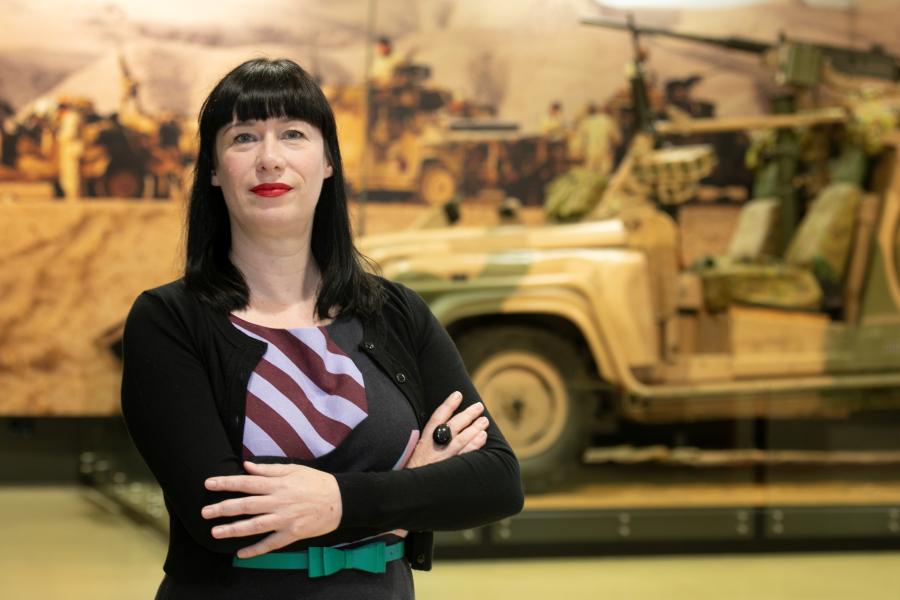
Bliss Jensen in the Memorial's Peacekeeping gallery.